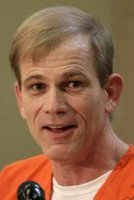Yes, I realize that "troubles come in threes" is a myth. But in any truly random distribution clumps will form in the data. I'm just going through a clump of trouble at one of the ends of a normal bell curve.
I've been spending a lot of time visiting hospitals lately. Put this together with my job as an electronic engineer, and acting as a caregiver, and I really don't have the energy - let alone the time to complete the documents that I'd like.
On top of this, my poor, faithful, Wal-Mart computer (souped up to acceptable performance levels) finally died. Luckily it happened about the same time that my replacement motherboard for my Toshiba Satellite laptop arrived. It took several hours of work but I successfully transplanted the motherboard into my formerly dead laptop, and am using right now!
I promise, as soon as my life shakes itself out a little I'll be back to blogging on my regular 3-6 post per week schedule.
I've been spending a lot of time visiting hospitals lately. Put this together with my job as an electronic engineer, and acting as a caregiver, and I really don't have the energy - let alone the time to complete the documents that I'd like.
On top of this, my poor, faithful, Wal-Mart computer (souped up to acceptable performance levels) finally died. Luckily it happened about the same time that my replacement motherboard for my Toshiba Satellite laptop arrived. It took several hours of work but I successfully transplanted the motherboard into my formerly dead laptop, and am using right now!
I promise, as soon as my life shakes itself out a little I'll be back to blogging on my regular 3-6 post per week schedule.
powered by performancing firefox















